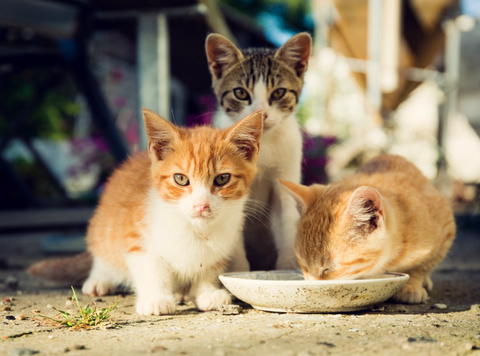How to Cool Your Outdoor Cat in the Summer
Every summer, when the temperature continues to soar, it's not just people who have a hard time, but cats who live outdoors face a huge survival challenge. They don't have air conditioning, fans, and can't always find shelter from the sun. Once exposed to high temperatures for a long period of time, they may become dehydrated and weak, or die of heatstroke. As feeders, there is only so much we can do, but with a little bit of care, we can greatly improve the quality of their summer survival.
A well-ventilated outdoor cat house that is protected from light and sunlight can give cats the most basic sense of security in hot weather. If you are feeding stray cats or “community cats” after TNR, it is recommended to build or prepare a stable outdoor shelter for them. The cat house should avoid closed materials, choose light-colored, heat-insulating structures, and be placed in the shade of a tree, at the root of a wall or in a location that is not exposed to the sun. We also recommend adding cooling aids to the cat house, such as ice packs wrapped in towels, so that the cat can be near to cool down if it feels overheated. Ice should not come into direct contact with the cat's body to avoid overstimulation.

In addition to shelter, water is even more critical for summer survival. Outdoor cats are very susceptible to dehydration, especially if their body temperature rises after activity. Be sure to provide a clean, cool source of drinking water and change it regularly. You can place a few ice cubes in the water bowl or use a refrigerated water bottle placed nearby to help keep the water at the right temperature. Stainless steel or ceramic water bowls are recommended to avoid the odor that plastic containers produce when exposed to the sun.
For feeding, try to avoid the midday heat and choose early morning or late afternoon. Dry food is recommended to minimize the risk of wet food rotting in the heat. If you are using an outdoor cat house for feeding, you can also pair it with a sunshade or rain cover to further prevent the food from deteriorating in the sun.

When you see symptoms such as panting and open-mouthed, unresponsive and unsteady gait, your cat may have suffered heat stroke. At this point, you can move it to a shady spot as soon as possible, wipe its body with a wet towel to help cool it down, and contact your local animal rescue organization for help if necessary.
We can't build a summer paradise for every cat, but even a small outdoor cat house, a bowl of water, or an ice pack are important for their survival in the heat.

No comments